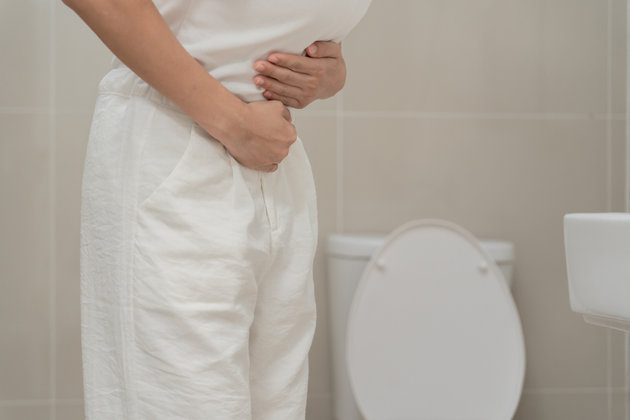What is cystitis and what is the treatment?
Cystitis, which is more common in women than in men, is actually a treatable disease, even though it is thought to be “unsolvable”.

Cystitis, which is more common in women than in men, is actually a treatable disease, even though it is thought to be “unsolvable”. Anadolu Health Center Urology Specialist Dr. said that the cystitis problem can be prevented with the right treatment and lifestyle. Elnur Allahverdiyev: “Symptoms of cystitis are similar to the symptoms of all diseases related to the bladder. Therefore, it is important for people with complaints to consult a urologist for correct diagnosis and treatment,” he said. Dr. Elnur Allahverdiyev gave important information on the subject…
What is cystitis?
In medical terminology, cystitis literally means bladder inflammation, that is, bladder infection. We can describe the symptoms of cystitis as burning sensation in urination, frequent urination, feeling like there is a lot of urine but not being able to urinate, and feeling of not being able to ejaculate completely. The condition of frequent urination is called “cystitis” among the public. However, frequent urination is seen in all diseases of the bladder. Therefore, a patient who complains of frequent urination or burning sensation with each urination should not be considered as having “cystitis”. It is important for people with this complaint to consult a urologist for correct diagnosis and treatment.
What diseases can be confused with “cystitis”?
For example; Urinary tract stones, bladder stones, infection of any organ close to the bladder, inflammation, any infection of the intestines or prostate gland, or urinary tract stenosis may make you feel like you have cystitis. Because the symptoms of all diseases related to the bladder are the same. Therefore, when the patient says “I have cystitis”, he/she should be evaluated by a urologist.
What is done to treat cystitis?
If there is a simple urinary tract or bladder infection, antibiotic treatment may be started against the causative agent of the infection. But if the complaints are not due to this type of infection, antibiotic treatment will not work.
How many types of cystitis are there?
Cystitis is divided into two groups: acute and chronic cystitis. However, these are also divided into subgroups among themselves.
What is interstitial cystitis?
It is inflammation of the bladder wall without bacterial infection. Interstitial cystitis is also defined as “painful bladder syndrome.” It is a long-term (chronic) problem in which pain, a constant feeling of urgency or burning sensation to urinate is present. In the treatment, different medications can be administered into the bladder. Its incidence in women is on average 10 times higher than in men.
In what cases are interventional treatments such as botox and blockage applied? Are they applied in all types of cystitis?
Botox is applied inside the bladder in cases such as overactive bladder and neurogenic bladder. It relieves patients’ complaints with 70% success within an average of 6 months.
Can diet cause cystitis?
Diet is an integral part of treatment in chronic cystitis. We can say that it is a must. Especially consumption of fried foods, salty, spicy foods, acidic drinks, tea and coffee can trigger cystitis. We recommend staying away.
Is cystitis more common in women or men?
Cystitis is more common in women due to different anatomical features. Cystitis due to urinary tract infection is more common in women because their anatomical structures are different from men. Since the urinary tract is shorter in women, bacteria from the genital area can easily reach the urinary tract. For this reason, women are more prone to get cystitis, and some women even get cystitis frequently.
How is frequently recurring cystitis treated?
If a woman or man has symptoms of recurrent urinary tract infection, the patient must be evaluated, the cause must be found and treated. When the cause is not investigated, patients receive antibiotic treatment for a long time, but recurrent cystitis is not prevented.
What are the risk factors?
The most important risk factors for urinary tract infections and cystitis include not drinking enough fluids and anomalies such as urinary tract stenosis. For example, wearing a wet swimsuit or having cold feet in the summer months are also among the risk factors. Having a cold increases the symptoms of overactive bladder (colloquially known as cystitis) in patients with chronic cystitis. Consuming plenty of fluids and urinating regularly reduces the possibility of cystitis. Sometimes, women develop symptoms of cystitis after intercourse. These women need to be examined and correctable causes need to be treated.
What should be done to prevent recurrent cystitis?
In order to prevent recurrent urinary tract infection or cystitis, it is necessary to consume plenty of fluids, go to the toilet regularly, not retain urine and pay attention to hygiene. In addition, constipation is one of the important causes of cystitis. Therefore, if there is constipation, the constipation must first be addressed and treated. In order to prevent recurrent cystitis, it is also important to treat any urination disorders, vaginal dryness, anomalies in genital structure, urinary tract stenosis or anatomical disorders in the urinary tract.



